Finally, we’re to the modern era of smart watches – stuff that’s actually for sale today.
Most of the modern smart watches all connect to a host device via Bluetooth (with one exception), at least an Android device if not additional platforms, for notifications. Some act as dumb terminals (along the lines of the Abacus/Sony watches mentioned in the previous post), whereas some have some local processing power and even apps (some running Android).
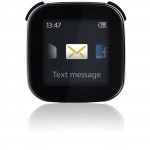 The first of the modern era of smart watches – also one of the two descendants of the Abacus/Sony Ericsson MBW line of watches – Sony Ericsson’s LiveView, came out in September of 2010. It used an OLED screen (meaning the screen was off by default), and had support for running various widgets from a phone, although it was fairly limited in capability.
The first of the modern era of smart watches – also one of the two descendants of the Abacus/Sony Ericsson MBW line of watches – Sony Ericsson’s LiveView, came out in September of 2010. It used an OLED screen (meaning the screen was off by default), and had support for running various widgets from a phone, although it was fairly limited in capability.
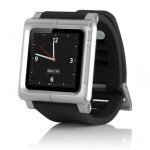 Also in September 2010 was the launch of a device not originally intended as a watch, but with some third-party accessories, would eventually become one (and Apple even ended up embracing that use of it) – Apple’s 6th-generation iPod nano. The only smart watch in this post without the ability to sync to a phone, it’s obviously intended as a media player first and foremost. Unfortunately, this means that some of the watch functionality isn’t quite as good as it could be, and it uses a color LCD that shuts off.
Also in September 2010 was the launch of a device not originally intended as a watch, but with some third-party accessories, would eventually become one (and Apple even ended up embracing that use of it) – Apple’s 6th-generation iPod nano. The only smart watch in this post without the ability to sync to a phone, it’s obviously intended as a media player first and foremost. Unfortunately, this means that some of the watch functionality isn’t quite as good as it could be, and it uses a color LCD that shuts off.
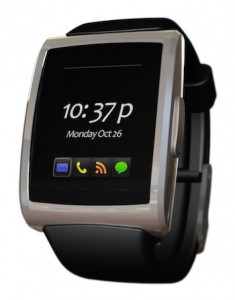 Soon afterwards, in October of 2010, Allerta launched their inPulse smart watch, intended primarily for BlackBerry applications, although also supporting Android. This watch also used an OLED display. This watch has limited input (one button), but third-party software has been written for it.
Soon afterwards, in October of 2010, Allerta launched their inPulse smart watch, intended primarily for BlackBerry applications, although also supporting Android. This watch also used an OLED display. This watch has limited input (one button), but third-party software has been written for it.
 August 2011’s WIMM One brought Android itself to a watch, although with a highly customized UI, including switchable watch faces and widgets. This watch uses a transflective color LCD that stays on at all times, and the watch is significantly more powerful than previous watches, even including wifi. This watch has only been launched as a developer device, but you can buy one, so it does count…
August 2011’s WIMM One brought Android itself to a watch, although with a highly customized UI, including switchable watch faces and widgets. This watch uses a transflective color LCD that stays on at all times, and the watch is significantly more powerful than previous watches, even including wifi. This watch has only been launched as a developer device, but you can buy one, so it does count…
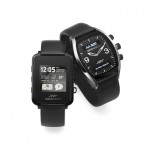 While we’re talking about developer devices… in September of the same year, the Meta Watch developer devices (an analog watch with OLED displays much like the Abacus/Sony Ericsson MBW watches, and a digital watch with an always-on memory-in-pixel monochrome reflective display) launched. These devices were intended to have very, very minimal processing power, and act more as a display device. Oh, and the analog model’s similarity to the MBW watches isn’t a coincidence – Meta Watch began as a Fossil project, as a successor to the MBW watches, although it ended up spinning off of Fossil. (In fact, both of the developer devices, and the programming clip, have Abacus model numbers.)
While we’re talking about developer devices… in September of the same year, the Meta Watch developer devices (an analog watch with OLED displays much like the Abacus/Sony Ericsson MBW watches, and a digital watch with an always-on memory-in-pixel monochrome reflective display) launched. These devices were intended to have very, very minimal processing power, and act more as a display device. Oh, and the analog model’s similarity to the MBW watches isn’t a coincidence – Meta Watch began as a Fossil project, as a successor to the MBW watches, although it ended up spinning off of Fossil. (In fact, both of the developer devices, and the programming clip, have Abacus model numbers.)
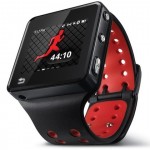 Next up is another major smartphone manufacturer’s attempt at a smart watch companion, from November of 2011, Motorola’s MOTOACTV. However, this device was intended as a fitness device and media player, although also with the ability to show notifications from a Motorola (or, with some hacking, other brand) phone – so, again, watch functionality is crippled. Yep, shuts down the display when not in use. However, underneath, it runs Android, with fairly similar hardware to many devices from Motorola’s single-core Droid line.
Next up is another major smartphone manufacturer’s attempt at a smart watch companion, from November of 2011, Motorola’s MOTOACTV. However, this device was intended as a fitness device and media player, although also with the ability to show notifications from a Motorola (or, with some hacking, other brand) phone – so, again, watch functionality is crippled. Yep, shuts down the display when not in use. However, underneath, it runs Android, with fairly similar hardware to many devices from Motorola’s single-core Droid line.
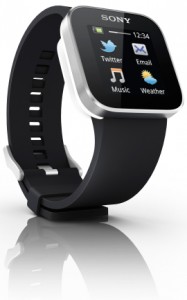 Sony replaced their LiveView with a reworked version with improved user interface, the SmartWatch, in February of 2012. Same concept, though, as the LiveView, just a revamp to make things work better – but it still runs an OLED display, which means no always-on time display.
Sony replaced their LiveView with a reworked version with improved user interface, the SmartWatch, in February of 2012. Same concept, though, as the LiveView, just a revamp to make things work better – but it still runs an OLED display, which means no always-on time display.
Now, if you’re aware of the modern world of smart watches, you’re probably wondering why I haven’t listed the I’m Watch yet. (For those unaware, it’s a smart watch running a mildly customized build of Android 1.6.) The simple reason is, all of the release dates I can find have been missed, and nobody has actually received one yet. So, yes, you can give the manufacturer money for it, but you can’t actually GET one yet, it seems. Given the level of vapor surrounding it, I’m quite skeptical at this point.
So, this concludes my tour through the history of smart watches. If you’ve got any questions, comments, or corrections, please leave them in the comments section!
Where could we buy these products in Taiwan?
The LiveView is discontinued, so I’d Google for a retailer that still has it.
The iPod Nano… try your nearest Apple store or reseller?
The inPulse, it looks like they do ship internationally. That said, Allerta has the Pebble coming out soon, which looks like a better watch if you don’t mind losing color – and they have a Kickstarter up now, accepting pre-orders. (Already went ahead and backed it with a $115 order, it looks like it’ll be far nicer than the Meta Watch that I currently have.)
The Meta Watch is unavailable for shipment to “Asia or Japan” (um, aren’t those the same thing?), according to TI’s site, so that won’t work for you.
The MOTOACTV and SmartWatch, I’d look at local Motorola and Sony resellers respectively.
I am interested and want to buy Allerta inPulse smart watch but how do while I was in Indonesia. is there an easy way to get it? please tell me
It looks like the inPulse is no longer available, due to the Pebble coming out.
how about the LG’s LG-GD910? couldn’t it be considered as first 3G availabe “smart”watch?
Honestly, I forgot that one existed.